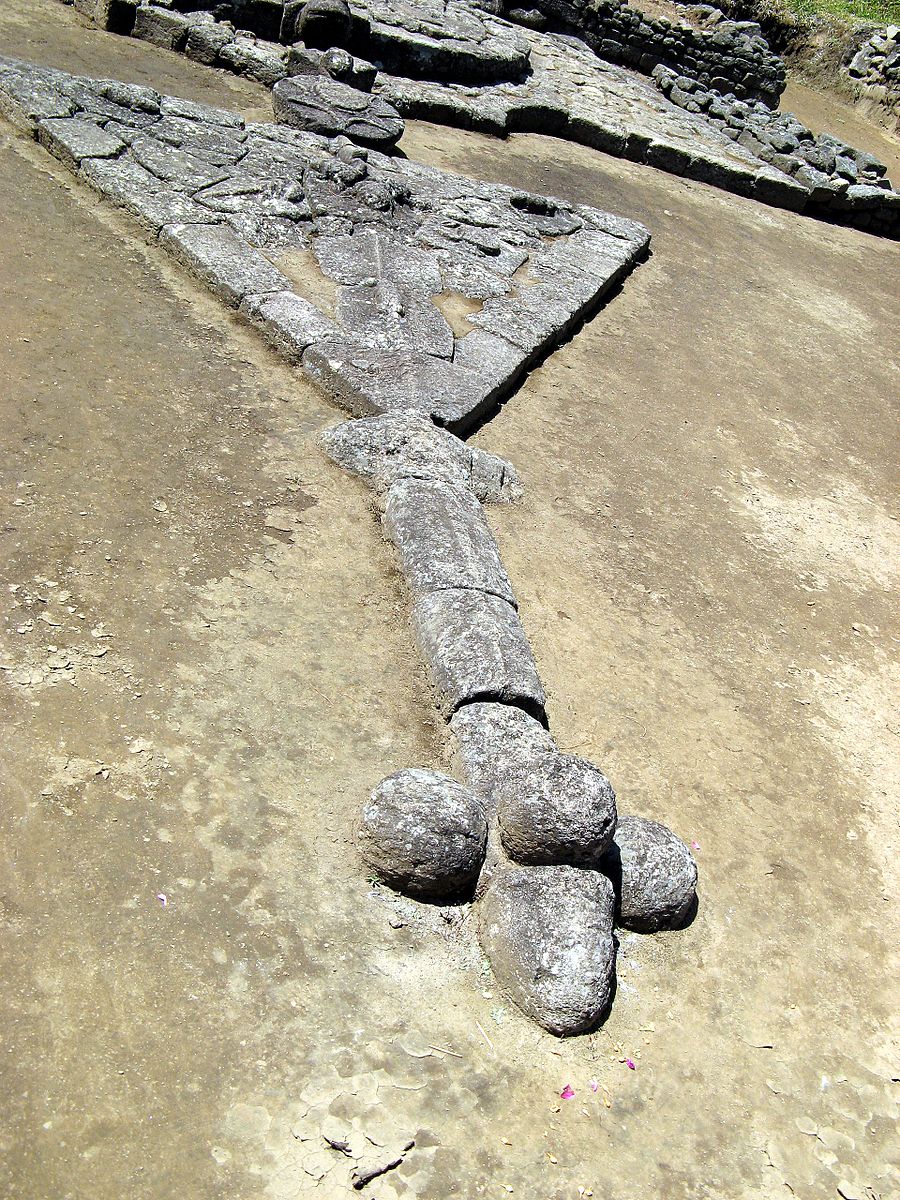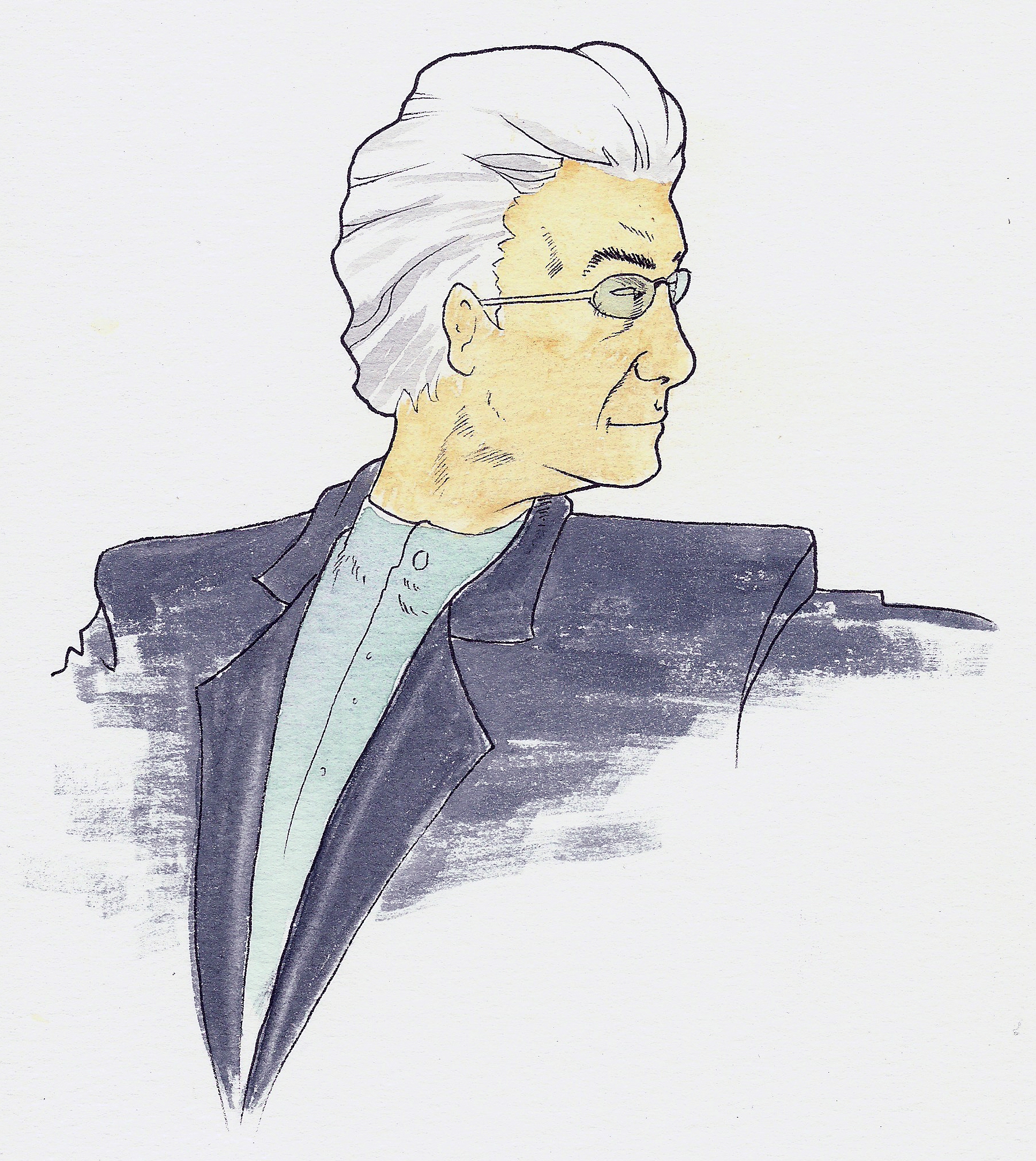The following is the second of a three-part series. The first can be found here, the second here.
Likewise, Teresa de Lauretis argues that gender is best understood as “the representation of a relation, that of belonging to a class, a group, a category.”[1] Sexual difference is not the result of the difference between male and female genitalia but rather, sexual difference becomes understood as that difference. Jacqueline Rose states this succinctly: sexual difference is “assigned according to whether individual subjects do or do not possess the phallus, which means not that anatomical difference is sexual difference (the one as strictly deducible from the other) but that anatomical difference comes to figure sexual difference, that is, it becomes the sole representative of what that difference is allowed to be.”[2]
Like the seating arrangement that appears “natural and right,” sexual difference appears as a natural category due to its relation to genitalia. The rules of signification are presented as being part of the natural order, an order that is legitimized and sustained by systems that are moral, medical, legal, social, political, and supernatural:
Insofar as taxonomies are in part epistemological instruments, the claim is advanced that they make possible knowledge of the underlying patterns of the natural order. But insofar as taxonomies are also instruments for the organization of society, those patterns are extended to – better yet, imposed upon – social groupings, as the social module (whether explicit or not) is associated to the modules of the natural world, being treated as if it were but one more instance of a general cosmic law. More than legitimate, arbitrary social hierarches are thus represented as if given by nature, and agitation again their inequities – which tends to come from those who have been subordinated and marginalized by these systems – is made to seem but the raving of lunatics.[3]
The dismissal of the complexity of sex and gender and the implication that any non-binary way of understanding sexual difference is simply “the raving of lunatics” is evident not only in Versaldi and Zani’s article but also in the Catholic League’s response to biologist Anne Fausto-Sterling’s proposal for a five gender system. The authors, in a full-page advertisement in the New York Times write, “It is maddening to listen to discussion of ‘five genders’ when every sane person knows there are but two sexes, both of which are rooted in nature.”[4]
Not only are ideas outside of the system seen as irrational and unnatural but they are also seen as dangerous. Gender theory, the great threat that Versaldi and Zani perceive, has been compared by Pope Francis to nuclear arms and genetic engineering: “Let’s think of the nuclear arms, of the possibility to annihilate in a few instants a very high number of human beings. Let’s think also of genetic manipulation, of the manipulation of life, or of the gender theory, that does not recognize the order of creation.”[5] The binary system that Versaldi and Zani present on natural and supernatural grounds is not only a system of male and female but it is also a taxonomy of differences where other binaries – subject/object, authority/submission, phallus/castrated, public/private, head/body, worth/shame – stitch the natural and supernatural together. Lacan’s all-encompassing view of the subject within the symbolic means that we cannot escape these binaries.
These are the words that are woven through our being, which we use to give meaning to reality. There is no meaning that isn’t already religious, no viewpoint outside of religion, hence Lacan’s claim that “meaning is always religious.”[6] This is clear in Seminar XXI when Lacan chides his atheistic audience, saying “I know you’re not believers, right? But that doesn’t mean that you aren’t all the more conned.”[7] In his book Lacan and Religion, Aron Dunlap writes that while Lacan was not interested in creating an overarching theory of religion, he nevertheless accorded religion a central place in how humans understand reality; that is, not only does religion make meaning but it also predictively determines meaning: religion “provide[s] a unifying role within the psyche, providing meaning by determining at the outset what can and cannot be found.”[8]
Thus, religion is not just an illusion but it is the illusion that creates the shared reality of humans, an illusion so powerful that we are forever barred from discovering meaning separate from it. Lacan insisted that “even if you are not believers, you still believe in that aspiration [for the love of God]. I won’t say that you suppose it; rather, it supposes you.”[9] The power of religion lies in the fact that it “supports and underwrites our very structures of being, subjectivity and social interaction.”[10]
Lacan declares that the function of mythology is to situate a subject in the world, to provide a way of orientating oneself. He asks, isn’t it “clear that these mythologies are aimed at installing man, at placing him upright, in the world – and that they tell him what the primordial signifiers are, how to conceive their relationship and their genealogy?”[11] The use of Lacan’s theories shows that the Vatican’s organization of the world is an ideological naturalization of gender. As a patriarch of the Lincoln clan, Mr. Lincoln’s authoritative position as eldest male at the table, links him directly to the position of father. In the same way, Lacan argues that none of us can escape the symbolic order that is founded on a patriarchal notion of power and authority. The signifier establishes both authority (the No-of the-father) and authorship (Name-of-the-father) through a phallogocentric discourse that establishes identity and meaning on patriarchal terms. A Lacanian analysis of “Male and Female He Created Them” demonstrates how fathers, Christian or atheist, are symbolically linked to God the Father because of the power of the symbolic. Signifiers of masculinity are stitched to other signifiers, both natural and supernatural, through the fear and power of fathers, both divine and human.
The Phallus is Veiled
In “Male and Female He Created Them: Towards a Path of Dialogue on the Question of Gender Theory in Education,” Versaldi and Zani offer a theory of sexual difference that is sexually dimorphic, God-given, and sees only heterosexual identities and desires wedded in a traditional hierarchical relation to each other. For Versaldi and Zani, sexual difference finds its ideal in the oppositional relationship of a submissive mother and an authoritarian father. Fathers, natural and supernatural, are invested with subjecthood, the power of authority and the power to name, while mothers, whether it be the Virgin Mary, the Church, or actual mothers, are seen as objects of submission whose identity exists only in relation to the father.
Furthermore, not only do Versaldi and Zani argue that an individual’s proper biological, psychological, and spiritual development rests upon this understanding of sexual difference but they also warn that the future of society itself is dependent on this narrow view. By grounding their argument in the Bible and using documents authored by various popes, Versaldi and Zani sanction their view of the natural world of diverse bodies by appealing to the power of supernatural authorities. Just as fathers govern over mothers and children in Versaldi and Zani’s view, the narratives of the divine father police social reality.
Lacan’s understanding of human sexuality differs greatly from the Vatican’s. Lacan’s model, being devoid of spirituality, of God-given attributes, of any innate sense of meaning, sees sexual difference as a biocultural system that creates the social reality within which we are formed. It also allows one to uncover the ideological underpinnings of that created reality.
Lacan argued that psychoanalysis “should not try to produce ‘male’ and ‘female’ as complementary entities, sure of each other and of their own identity, but should expose the fantasy on which this notion rests.”[12] The fantasy that Versaldi and Zani espouse is one that is misogynistic and transphobic. It denies humanity to people who exist outside of the binary, torturing those people, psychologically and physically, in order to enforce the law of sexual difference, a difference produced by medical authorities and supported by these religious authorities. Lacan’s insights into the production and operation of these taxonomies reveal how power and fear are used to create these seemingly natural positions.
For Lacan, meaning is something created by religion in its attempt to impose a symbolic order upon the world, as he states in the following provocative passage:
It took some time, but they [Christians] suddenly realized the windfall science was bringing them. Somebody is going to have to give meaning to all the distressing things science is going to introduce. And they know quite a bit about meaning. They can give meaning to absolutely anything whatsoever. A meaning to human life, for example. They are trained to do that. Since the beginning, religion has been all about giving meaning to things that previously were natural.”[13]
Lacan’s great revelation, according to Foucault, was that meaning itself is arbitrary: “Lacan, in the case of the unconscious, showed us that “meaning’ was probably no more than a superficial impression, a shimmer, a foam, and that what was really affecting us deep down inside, what existed before us, and what was supporting us in time and space, was system.”[14] The task of the Lacanian analyst is “to understand just how the system, which at first appeared to be autonomous, governed by the purely conventional and internal laws, nevertheless requires this peculiar object and requires that it have precisely this enigmatically “natural” status, the apparent and illusory “exteriority.”[15]
The system of sexual difference presented by the Vatican works by veiling the phallus of God, denying the link between maleness and power. Use of Lacan’s theory allows one to draw back the veil on the Vatican’s phallus, exposing its fraudulent nature. It reveals why the Vatican, from Pope John Paul II to Versaldi and Zani, have seen gender theory as such a threat.
Throughout the various texts I have discussed, God is explicitly referred to as male, whether as the Father, the Son, or simply as “he.” Even the name of the highest position within the Catholic church is pope, or “papa” in Italian. Yet, as Pope Francis explains, God is beyond sexual difference:
Those first pages of the Bible make a number of very clear statements. The first, which Jesus paraphrases, say that “God created man in his own image, in the image of God he created them; male and female he created them” (1:27). It is striking that the “image of God” here refers to the couple, “Male and female.” Does this mean that sex is a property of God himself or that God has a divine female companion, as some ancient religions held? Naturally the answer is no.[16]
The denial of the maleness of God, the supernatural authority, is also reflected in the fact that human authorities, such as Versaldi and Zani, speak through the Church, itself a female entity: “The Church, mother and teacher, does more than simply listen. Remaining rooted in her original mission, and at the same time always open to the contribution of reason, she puts herself at the service of the community of peoples, offering it a way of living.”[17] By identifying themselves with the Church, and thus with submission, the authors veil aspects of maleness through which their authority speaks.
Lacan’s understanding of the phallus as a velied object is helpful when analyzing the ability of the Vatican’s writers to call God male explicitly while still insisting that “he” is beyond sexual difference. In “The Signification of the Phallus,” Lacan writes that the phallus “can play its role only when veiled, referring to the Dionysian initiation rites where a secret object, an erect phallus lying in a winnowing basket (a liknon), was revealed to the initiate during the mystery rites of the ancient Greco-Roman world.[18] The meaning of Dionysos’s veiled phallus is enhanced by understanding the god’s ambivalent identity.
While he was part of the Greek pantheon, Dionysos was also thought to be a foreigner. He was experienced by his followers in the eating of the flesh of wild animals and in the drinking of cultivated wine. He was symbolized in overtly masculine ways such as the form of a bull or a phallic pillar. At the same time he was known for his womanly dress and hairstyle, as well as his effeminate conduct. The initiate who experiences the divine rites of Dionysos’s mystery cult was given a chance to see the true form of the god, one which is denied outwardly by Dionysos’s feminine nature and hidden by a veil in depictions of initiates with the liknon.
Like the hidden phallus of Dionysos, the signifier of the phallus “works by denying itself.”[19] By this denial it “appears to precede symbolization and guarantee its basis in nature, but in in fact a by-product of the structure itself.”[20] Rather than seeing how the supernatural narrative is imposed upon nature, nature itself is only understood through the lens that the supernatural narrative provides. The inability to see beyond this narrative is the power of religion, a force so powerful that Lacan states that “we can’t even begin to imagine how powerful [it] is.”[21]
In Juliet Mitchell’s introduction to the Lacan’s Feminine Sexuality, she observes that psychoanalysis should not subscribe to ideas of how men and women do or should live as sexually differentiated beings, but instead it should analyze how they come to be such beings in the first place.”[22] Gender theory, the focus of “Male and Female He Created them,” threatens the Vatican’s understanding of sexual difference because denaturalizes the link between sex and genders and cuts the stitches that bind the natural and supernatural. Lacan’s work allows one to “lift[] the veil” on biblical taxonomy, revealing that sexual difference is an arbitrary system that creates meaning by stitching masculinity to the phallus by force and fear.
Melissa Conroy is Associate Professor of Religion at Muskingum University. She has been published in the Journal of Religion and Film and Zygon: Journal of Religion and Science and is currently working on a book about Jacques Lacan.
______________________________________________________________________________
[1] De Lauretis, 4.
[2] Jacques Lacan, Feminine Sexuality: Jacques Lacan and the école freudienne, Trans. Jacqueline Rose, eds. Juliet Mitchell and Jacqueline Rose, (New York, NY: W.W. Norton & Company, 1983), 42.
[3] Lincoln, 140-141.
[4] Anne Fausto-Sterling, Sexing the Body: Gender Politics and the Construction of Sexuality (New York, NY: Basic Books, 2000), 78.
[5] Joshua McElwee, “Francis strongly criticizes gender theory, comparing it to nuclear arms,” National Catholic Reporter. Feb. 13, 2015. https://www.ncronline.org/news/vatican/francis-strongly-criticizes-gender-theory-comparing-it-nuclear-arms
[6] Jacques Lacan, Autres Écrits (Paris: Éditions du Seuil 2001), 318.
[7] Kenneth Reinhard and Julia Reinhard Lupton, “The subject of religion: Lacan and the ten commandments,” Diacritics 33 (2) 71-97 (2003): 71.
[8] Aron Dunlap, Lacan and Religion (Durham, UK:Acumen 2014), 4.
[9] Quoted in Reinhard and Reinhard Lupton 2003, 71 (emphasis in original).
[10] Ibid.
[11] Lacan 1997, 200.
[12] Rose in Lacan 1983, 33.
[13] Jacques Lacan, On the Names-of-the-Father, Trans. Bruce Fink, (Malden, MA: Polity 2013), 64-65.
[14] Quoted in Roudinesco, 296.
[15] Shepherdson, 22.
[16] Pope Francis, 8-9.
[17] Versaldi and Zani, 17.
[18] Lacan 2006, 581.
[19] Ibid.
[20] Shepherdson, 25.
[21] Lacan 2013, 64.
[22] Mitchell in Lacan 1983, 3.
[23] Lacan 2006, 581.



